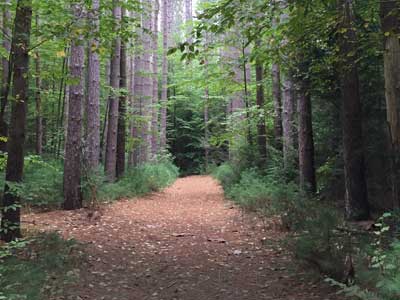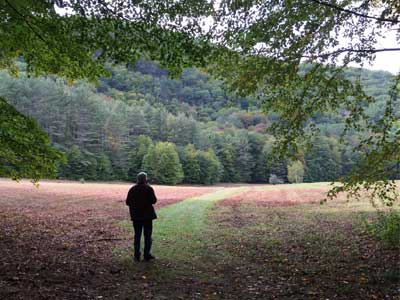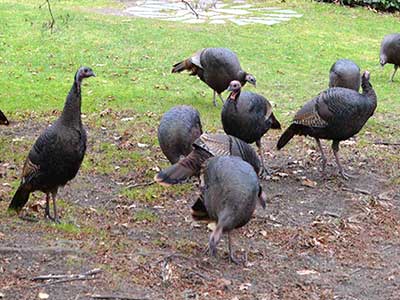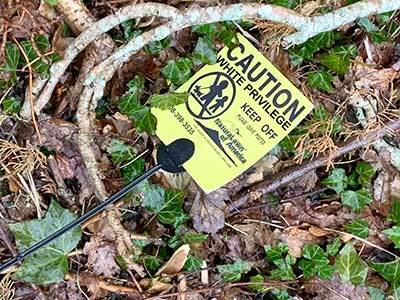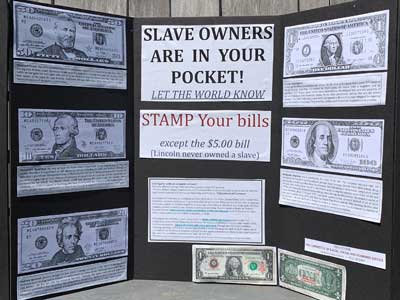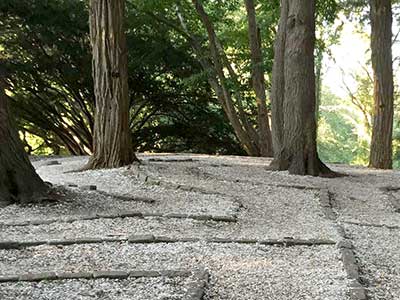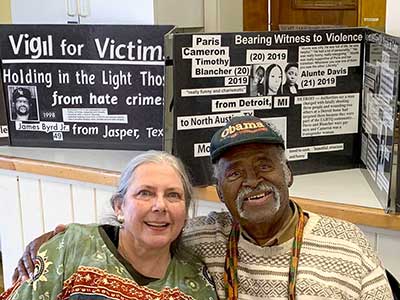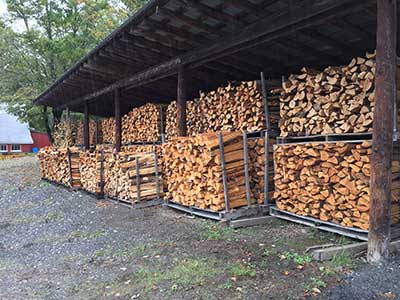by Aukram Burton | February 2021
African culture is vastly misunderstood in western societies. This misunderstanding continues to be perpetuated by educational and media institutions in the Western world that consistently misrepresent the image and contributions of African culture and ethics to the world. For centuries, European-centric thinking has justified colonialism and imperialism as a “civilizing mission” meant to save the African “savages” who live in “sh–holes” often characterized by terms like “exotic,” “primitive” or “pagan,” which is a misconception. This thinking is rooted in the age of European Enlightenment in the 17th and 18th centuries. This movement provided an intellectual backdrop for European theories about human differences.
TAGS: [Assumptions] [2020’s] [Myths] [History] [Definitions] [Slavery] [Systemic Racism] [White Supremacy] [Economics] [White Blindness]
Resource Links Tagged with "White Supremacy"
How the GI Bill’s Promise Was Denied to a Million Black WWII Veterans; The Sweeping Bill Promised Prosperity to Veterans. So Why Didn’t Black Americans Benefit?
by Erin Blakemore | September 2019
When Eugene Burnett saw the neat tract houses of Levittown, New York, he knew he wanted to buy one. It was 1949, and he was ready to settle down in a larger home with his family. The newly established Long Island suburb seemed like the perfect place to begin their postwar life—one that, he hoped, would be improved with the help of the GI Bill, a piece of sweeping legislation aimed at helping World War II veterans like Burnett prosper after the war. But when he spoke with a salesman about buying the house using a GI Bill-guaranteed mortgage, the door to suburban life in Levittown slammed firmly in his face. The suburb wasn’t open to Black residents.
TAGS: [Strategies] [2010’s] [Systemic Racism] [Racial Covenants] [Black Lives Matter] [Economics] [White Privilege] [White Culture] [White Supremacy] [Denial] [Housing] [Politics] [History] [Social Justice]
The Violent History of White Supremacy Is Rarely Taught in Schools. It Should Be.
by Corey Mitchell | January 2021
Searing images from this month’s mostly white insurrection in Washington, D.C.—including a hangman’s noose on the Capitol grounds and the Confederate flag carried inside the U.S. Capitol—harken back to another era when both were tools and symbols of white supremacy across the country. But relatively few students have learned about previous sordid moments that foreshadowed this year’s efforts to instill terror and violently overturn an election such as the Wilmington Insurrection of 1898, widely thought to be the only successful coup in U.S. history, and the Tulsa Race Massacre.
TAGS: [Racial Terrorism] [2020’s] [History] [Social Justice] [Systemic Racism] [White Culture] [Slavery] [Politics] [Denial] [Silencing POC] [Teachers] [White Supremacy] [White Privilege] [White Blindness] [White Defensiveness] [Black Lives Matter]
How U.S. Backed Banks Robbed Ex-Slaves of $66 Million
by Jared Brown | Month Unknown 2016
In 1871, Congress authorized banks to provide business loans and mortgages. Paradoxically, such mortgages and loans were usually administered to whites at the expense of black depositors. Risky investments and lending patterns, coupled with cronyism and corruption at the level of upper management, slowly undermined the stability of the bank. According to Black Past, “By 1874, massive fraud among upper management and among the board of director had taken its toll on the bank. Moreover, economic instability brought upon by the Panic of 1873, coupled with the bank’s rapid expansion, proved disastrous.” The Freedmen’s Bank was officially closed on June 29, 1874. At the point of closing, 61,144 black depositors were robbed of the modern equivalent of $66 million. The failure of the bank left many black depositors and borrowers distrustful of the white banking community, especially since the Freedmen’s Bank was established and managed by white men.
TAGS: [Strategies] [2010’s] [Systemic Racism] [History] [White Supremacy] [White Culture] [White Privilege] [Slavery] [Accountability] [Social Justice] [Economics] [Denial] [Racial Covenants] [Black Lives Matter]
Breaking From White Solidarity
by Erin Monahan | August 2019
Several times in the last week alone I have had encounters with white women who identify as liberal who have gotten upset when I address someone in the group about the casually racist or sexist thing they said. In one instance, I gave a very gentle mention to the person who said the casually racist statement. Because we are adults and we should be able to speak plainly about these things, we moved on. Everything seemed fine. As the night went on, a casually sexist thing was said, and then another casually racist thing was said. I interrupted both times with the intention to engage in conversation about it. … I have been addressed about my racism too many times to count. There are times that I have been defensive and violent in my response to being called out. And though I feel deep regret and shame for that behavior, I am always reflecting on these situations and thinking about how I can receive information with less guilt, shame, and anger the next time. I ask myself, what do I need to heal in myself in order to respond with more reception, true humility, and less ego? It’s never comfortable to receive how I have been racist. I feel a surge of embarrassment and desperation. I want to find a way to deny it, a way to rationalize my way out of it, a way to make myself feel better. This is my whiteness centering me. I focus on my feelings instead of my impact.
TAGS: [Individual Change] [2010’s] [White Fragility/Tears] [White Culture] [Cognitive Dissonance] [White Supremacy] [White Privilege] [Social Justice] [White Defensiveness] [White Blindness] [Anti-Racism]
Tignon Laws: The Dreadful Rule That Banned Black Women from Displaying Their Hair
by Farida Dawkins | February 2018
… there was a time when black women weren’t allowed to display their hair in public. Keep reading to learn about the Tignon Laws and how it was used to fuel racial tensions in the United States. A tignon (tiyon) is a headdress used to conceal hair. It was adorned by free and slave Creole women of African ancestry in Louisiana in 1786. The sumptuary law was enacted under Governor Esteban Rodriguez Miró. The regulation was meant as a means to regulate the style of dress and appearance for people of color. Black women’s features often attracted male white, French, and Spanish suitors and their beauty was a perceived threat to white women. The tignon law was a tactic used to combat the men pursuing and engaging in affairs with Creole women. Simply put, black women competed too openly with white women by dressing elegantly and possessing note-worth beauty.
TAGS: [Strategies] [2010’s] [Systemic Racism] [Silencing POC] [Black Lives Matter] [Definitions] [Denial] [White Supremacy] [White Privilege] [Slavery] [History]
Hypothetical Racism: The Trauma We Feel when White Terrorists Go Home and Innocent Black People are Shot on the Spot
by Taharee Jackson | January 2021
Hi. My name is Taharee Jackson, and I am suffering from HYPOTHETICAL RACISM.
I have not slept in two nights due to hypothetical racism-induced insomnia.
Allow me to explain. … Last night, on January 6, 2021, I was glued to the television, trying to see with my own eyes if the invasion of the United States Capitol by angry, White, gun-toting terrorists was actually happening. I kept waiting to see if throngs of police officers, special forces for insurrections, and National Guard members would show up in riot gear, handle them violently, spray rubber bullets, arrest them, shoot them, or even execute them on the spot. It happened. They did not. What truly kept me awake last night was my inability to identify the emotion I was feeling as a multiracial-mixed-with-Black woman watching the storming of the U.S. Capitol unfold WITHOUT CONSEQUENCE. Or, I should say, without the SAME consequences as the Antiracism and Black Lives Matter protests we just witnessed in all 50 states and the world over.
TAGS: [Assumptions] [2020’s] [Systemic Racism] [Accountability] [Black Lives Matter] [White Supremacy] [White Culture] [White Privilege] [Definitions] [Policing] [Indigenous] [Social Justice] [Politics] [Silencing POC] [Economics] [Denial] [Justice System] [Police Shootings] [Racial Terrorism] [History] [Anti-Racism]
Racism and ‘Years of Bullying’
by Jeffrey R. Young | February 2021
Dena Simmons, a prominent researcher of social-emotional learning, resigned from Yale University’s Center for Emotional Intelligence last month due to what she calls a pattern of behavior by some colleagues that left her feeling “tokenized, undermined and bullied.” The final straw for Simmons happened in June, during an antiracism town hall sponsored by Yale’s Child Study Center. Several people Zoombombed the event, yelling and typing racial slurs into the chat directed at Simmons. She quickly logged out of the forum, but colleagues encouraged her to return, and after she did, more unidentified participants attacked her with further racist comments.
TAGS: [Collective Action] [2020’s] [Silencing POC] [Systemic Racism] [-ing While Black] [Black Lives Matter] [White Supremacy] [White Culture] [White Privilege] [Social Justice] [Advocacy] [Teachers] [Tips-Dos/Don’ts] [Indigenous]
White Suffragettes Chose White Supremacy over Collective Liberation
by Reina Sultan | January 2020
White women love saying some variation of, “We are the granddaughters of the witches you could not burn”—even though no “witches” were actually burned at the stake during the Salem Witch Trials. It would be more accurate for them to say, “We are the granddaughters of the Suffragettes who sold out Black and brown women for their own political gain.” Because white women have been choosing whiteness since they fought for the right to vote.
TAGS: [Assumptions] [2010’s] [Systemic Racism] [History] [White Supremacy] [White Culture] [White Privilege] [White Blindness] [Politics] [Indigenous] [Myths] [Silencing POC] [White Fragility/Tears] [Collective Action]
Indiana Republicans Boo Black Lawmakers Speaking About Discrimination
by Stephen A. Crockett Jr. | February 2021
Nothing says discrimination like booing a Black person trying to talk about discrimination. Such is life during a floor debate inside the Indiana Statehouse on Thursday in which Black lawmakers claimed that a bill would allow students in the largely white St. Joseph County township to leave the racially diverse South Bend Community Schools to join a smaller, rural school made up of mostly white students.
TAGS: [Strategies] [2020’s] [Systemic Racism] [White Supremacy] [White Culture] [White Privilege] [Social Justice] [Black Lives Matter] [-ing While Black] [Politics] [Silencing POC]
‘A Missing Piece:’ Maine’s Connections to Slavery are Hidden in Plain Sight
*Paywall Alert
by Gilliam Graham | February Year Unknown
In July of 1750, a short notice appeared in a Boston newspaper calling for help finding an enslaved man who had run away from Ichabod Goodwin of Berwick in the province of Maine. Pompey was described as a short man of about 40 who spoke good English, wore a homespun jacket and checked shirt and had a cut ear. Fitted around his neck was an iron slave collar, a brutal device used by enslavers to identify and discipline the people they claimed as property. Goodwin, a blacksmith who offered a reward for Pompey’s return, likely made the collar himself. Notices like these of runaway slaves are among the few written documents that describe the reality and brutality of slavery in the early days of the Massachusetts Province of Maine. Largely left out of history books or minimized as an insignificant footnote, slavery remains a nearly hidden aspect of the history of Maine, a state better known as the home of abolitionists than enslavers or profiteers. However, reminders of Maine’s slavery connections linger in the coves, streets and other landmarks named for slaveholders who have been remembered instead for their contributions to shipbuilding, trade and establishing coastal towns.
TAGS: [Racial Terrorism] [Slavery] [Systemic Racism] [White Supremacy] [White Culture] [White Privilege] [Black Lives Matter] [History] [Social Justice]
This African American Woman Got No Credit for Designing the Image of Roosevelt on the U.S Dime in 1944
by Elizabeth Ofosuah Johnson | August 2018
Selma Burke was born on December 31, 1900, and was the 7th of ten children to her parents. Her father worked in the railway service and was a church minister, while her mother was a stay at home mom. At a very young age, Selma showed artistic skill and would often draw or carve objects out of used paper and cardboard. … In 1943, Selma entered a national competition which she won. Sponsored by the Fine Arts Commission in Washington D.C, the competition was to create a profile portrait of the then U.S. President Franklin Delano Roosevelt with a granted commission. Selma then wrote a letter to the president and was invited to the White House to do her sketch.
TAGS: [Assumptions] [2010’s] [Systemic Racism] [History] [Art & Culture] [Silencing POC] [Myths] [Black Lives Matter] [Denial] [White Culture] [White Privilege] [White Supremacy]
The Shameful Existence of Sundown Towns in America
by BLACKTHEN | February 2021
Don’t let the sun set on you in a sundown town. That’s what signs at the city limits of all-white communities warned when African-Americans were not allowed to live there or even visit after the sun set. This method of exclusion was often held by an official policy or restrictive covenant-. The practice of excluding blacks from American towns was so prevalent that, by 1936, it became the impetus for Harlem civic leader Victor Green to pen the Negro Motorist Green-Book, a guide designed to help African-American travelers avoid places where they could be harassed, threatened, or even killed. Today, it is illegal for sundown towns to exist on paper due to the 1968 Fair Housing Act, but some believe that communities remain sundown by reputation and reluctance to diversify.
TAGS: [Strategies] [2020’s] [History] [White Supremacy] [White Culture] [White Privilege] [Systemic Racism] [Racial Covenants]
Big Racial Gap in Suspensions Revealed in Falmouth Public Schools
by Jennette Barnes | February 2021
Students of color in the Falmouth Public Schools received 45 percent of the suspensions in the last school year, even though they make up only 21 percent of the student population. The Falmouth School Committee examined the data Tuesday, following recent complaints about racial disparities in school discipline. School Committee…
TAGS: [Collective Action] [2020’s] [Systemic Racism] [Teachers] [Indigenous] [Accountability] [White Supremacy] [White Privilege] [White Culture] [Black Lives Matter]
Slavery and New York City; Confronting Our History to End the Narrative of White Supremacy
by Chuck Armstrong | February 2021
The Historical Society reports that during the colonial period of our country, 41 percent of households in New York City owned slaves, compared with 6 percent in Philly and 2 percent in Boston. “Only Charleston, South Carolina, rivaled New York in the extent to which slavery penetrated everyday life.” In a lot of ways, the life of the enslaved African in New York City looked different than in Charleston or elsewhere in the South; according to The New York African Free School, “Although New York had no sugar or rice plantations, there was plenty of backbreaking work for slaves throughout the state. Many households held only one or two slaves, which often meant arduous, lonely labor. Moreover, because of the cramped living spaces of New York City, it was extremely difficult to keep families together. It was not uncommon for owners to sell young mothers, because they did not want the noise and trouble of children in their small homes.”
TAGS: [Racial Terrorism] [2020’s] [White Supremacy] [History] [Slavery] [White Culture] [White Privilege] [Systemic Racism] [Anti-Racism] [Justice System] [Denial] [Racial Covenants] [Black Lives Matter]
“I Am My White Ancestors” Claims the Legacy of Oppression; An Artist’s Journey into Her Family’s Whiteness
by Nancy Hill | March 2019
“I am about to turn over a goodly number of acres to cotton and have added more slaves to total 50. They were a large investment with housing and such. … We have heard that some states in the north have gone against nature and profit to prohibit slaves. … Without slaves, where do they expect to get cotton, tobacco, molasses, and rice? … Sometimes I do wonder if the slaves are truly as simple and childlike as some say. When I put some up for sale, I see their mothers stand there and openly weep. Imagine! Perhaps they really do feel as we do. But I banish that thought from my mind. … I am a good and kind master. These African slaves could not survive without me. They are better treated here than in the heathen land they come from. We clothe them and feed them, give them shelter and medical care and the discipline they need They have the benefit of civilized and white society.” —John Salley, 1740-1794, excerpt from audio story about Salley
TAGS: [Individual Change] [2010’s] [Slavery] [Systemic Racism] [White Supremacy] [White Culture] [White Defensiveness] [White Privilege] [White Blindness] [History] [Black Lives Matter] [Indigenous] [Art & Culture] [Anti-Racism]
Environmental Racism in Louisiana’s ‘Cancer Alley’, Must End, Say UN Human Rights Experts
by UN News | March 2021
The further industrialization of so-called “Cancer Alley” in the southern United States, known for its pollution-emitting chemical plants, should be halted according to a large group of independent UN human rights experts, who on Tuesday branded it a form of “environmental racism”. Originally dubbed “Plantation Country”, Cancer Alley, which is located in the southern state of Louisiana along the lower Mississippi River where enslaved Africans were forced to labour, serves as an industrial hub, with nearly 150 oil refineries, plastics plants and chemical facilities. The ever-widening corridor of petrochemical plants has not only polluted the surrounding water and air, but also subjected the mostly African American residents in St. James Parish to cancer, respiratory diseases and other health problems. “This form of environmental racism poses serious and disproportionate threats to the enjoyment of several human rights of its largely African American residents, including the right to equality and non-discrimination, the right to life, the right to health, right to an adequate standard of living and cultural rights”, the experts said.
TAGS: [Strategies] [2020’s] [Environment] [Health Disparities] [Slavery] [Black Lives Matter] [Social Justice] [Politics] [Systemic Racism] [White Supremacy] [White Culture] [White Privilege]
Mississippi School Asks Students to ‘Pretend’ to Be Slaves and Write Letters About Their ‘Journey’ to ‘Family Back in Africa’
by Zack Linly | March 2021
I don’t understand these “educators” who insist on taking slavery—the most brutal, cruel, and inhumane thing America has ever done to an entire race of people whose freedom, heritage, families and humanity were stripped from them—and turning it into some Sesame Street-ass game or activity that trivializes the centuries-long practice. Just last week, I reported on a school in Delaware in which kindergartners were being taught yoga positions that mimicked the way enslaved people were positioned on slave ships.
TAGS: [Collective Action] [2020’s] [Slavery] [Teachers] [Black Lives Matter] [Systemic Racism] [White Blindness] [White Culture] [White Privilege] [White Supremacy] [History] [Microaggressions] [Tips-Dos/Don’ts] [Accountability]
What Do We Do About John James Audubon?
by J. Drew Lanham | Spring 2021
The founding father of American birding soared on the wings of white privilege. The birding community and organizations that bear his name must grapple with this racist legacy to create a more just, inclusive world. Last summer, the Sierra Club denounced its first president, John Muir, as a racist unworthy of organizational adulation. Muir is a founding father of the American wilderness movement; he also characterized Blacks as lazy “sambos” and Native Americans as “dirty.” The National Audubon Society followed suit, stating that Audubon, too, was a racist. He enslaved at least nine people. He mostly referred to them as “servants” and “hands,” but never seemed especially concerned that the people helping him could be bought, sold, raped, whipped, or killed on a whim. Then again, relatively few men of his time did. Presidents did not. Why would he? Audubon’s callous ignorance wouldn’t have been unusual for a white man. It would have been de rigueur—an expectation of race and class that he enjoyed.
TAGS: [Collective Action] [2020’s] [Slavery] [History] [White Supremacy] [White Culture] [White Privilege] [Accountability] [Systemic Racism][-ing While Black] [Environment] [Myths] [Black Lives Matter] [Indigenous] [Implicit Bias] [Cognitive Dissonance] [Art & Culture]
Racial Discrimination Has Been ingrained in the Criminal Legal System from its Earliest Days and Persists Today
by Daniele Selby | February 2021
The legacy of slavery, racist Jim Crow laws, and hateful lynchings has translated into modern-day mass incarceration and the disproportionate imprisonment of Black people. No where is that seen more clearly than in prisons like the Mississippi State Penitentiary — also known as Parchman Farm — and Louisiana’s Angola prison, which were built on and modeled after slave plantations and where several Innocence Project clients have been incarcerated. Racial discrimination and bias has been ingrained in the criminal legal and law enforcement system from its earliest days and continues to pervade every level of the system today. The Innocence Project, with your support, is committed to addressing these injustices. These eight statistics highlight the ways in which racial inequality persists in the criminal legal system today and contributes to wrongful conviction.
TAGS: [Strategies] [2020’s] [Justice System] [Slavery] [Prison System] [Systemic Racism] [Social Justice] [White Supremacy] [White Culture] [White Privilege] [White Blindness] [Policing] [Implicit Bias] [Accountability] [Denial] [History] [-ing While Black] [Black Lives Matter]
Slavery Yoga Was Taught to Kindergarteners in Delaware for Black History Month. No, Seriously.
by Zack Linly | March 2021
Just Saturday, I wrote in a report that “It’s about time we have a serious conversation about how a lot of white teachers have no business whatsoever teaching Black students.” I based this statement on three separate stories—all of which occurred during this Black History Month—involving white teachers being racist while downplaying and/or distorting narratives around American racism during lectures to their students. Well, now there’s a fourth story—one that doesn’t necessarily feature educators denying the cruelty of slavery; they just made a fun game out of it which parents are rightfully calling “culturally insensitive, offensive” and “disturbing,”
TAGS: [Collective Action] [2020’s] [Teachers] [Slavery] [Black Lives Matter] [Systemic Racism] [White Blindness] [White Culture] [White Privilege] [White Supremacy] [History] [Microaggressions] [Tips-Dos/Don’ts] [Implicit Bias]
Educators Who Consider Themselves ‘White Allies’ Are Dangerous When It Comes To Developing Anti-Racist Classrooms
by Dr. Sana Shaikh| | February 2021
She knew the importance of using “She/her/hers” adjectives at the beginning of each virtual work session. She joined the book club where Dr. Kendi’s work was being discussed. By every metric, large or small, she showed that she was, inevitably and truly, an ally. But therein, laid the problem. She had characterized herself as an anti-racist ally. Black and brown educators and children around her would not label her in the same way. In the background, students of color—largely Black and Latinx—would complain to other teachers of color that their voices were not being heard. They would pushback against the teacher-centric approach in the classroom and the unilateral way that power and privilege played out in the school. When those suggestions and feedback were brought up to the white leaders, there was pushback: This teacher did not intend to have a harmful impact. She was leading with good intentions. She simply forgot to implement the feedback. All and all, this teacher was protected by the systems of white supremacy and power. Instead of her being held accountable, the messenger was classified as simply being uninformed. The messenger had a Ph.D. in culturally responsive pedagogy.
TAGS: [Individual Change] [2020’s] [Tips-Dos/Don’ts] [Anti-Racism] [Teachers] [Black Lives Matter] [Latino/a] [White Privilege] [White Supremacy] [White Culture] [Accountability] [Social Justice] [Assumptions] [White Blindness]
American Churches are Apologizing for a Centuries-Old Injustice That Still Reverberates Today; How We Can Start to Undo the Damage
by Melissa J. Gismondi | September 2018
In 2016, the General Assembly of the Presbyterian Church (PCUSA) repudiated the historic “doctrine of discovery.” Although it might sound benign, the doctrine was the pernicious theory that Christians could claim and conquer land inhabited by non-Christians. It helped justify and promote the violent colonization of indigenous lands throughout the Americas. This summer, the Assembly followed up on that repudiation by issuing a report outlining specific actions the church can take to grapple with the doctrine’s legacy. They include official acknowledgments before meetings of the indigenous nations on whose land the meeting is taking place, as well as more discussion of indigenous theologies and educational resources on the doctrine.
TAGS: [Collective Action] [2010’s] [Indigenous] [Faith-Based/Spiritual] [History] [Systemic Racism] [Justice System] [Denial] [White Culture] [White Supremacy] [White Blindness] [Accountability] [Economics] [White Privilege] [Role Model] [Strategies] [Tips-Dos/Don’ts]
How the History of Blackface Is Rooted in Racism
by Alexis Clark | February 2019
Blackface began in the US after the Civil War as white performers played characters that demeaned and dehumanized African Americans. The portrayal of blackface–when people darken their skin with shoe polish, greasepaint or burnt cork and paint on enlarged lips and other exaggerated features, is steeped in centuries of racism. It peaked in popularity during an era in the United States when demands for civil rights by recently emancipated slaves triggered racial hostility. And today, because of blackface’s historic use to denigrate people of African descent, its continued use is still considered racist. “It’s an assertion of power and control,” says David Leonard , a professor of comparative ethnic studies and American studies at Washington State University. “It allows a society to routinely and historically imagine African Americans as not fully human. It serves to rationalize violence and Jim Crow segregation.”
TAGS: [Collective Action] [2010’s] [History] [Systemic Racism] [Civil War] [White Supremacy] [White Culture] [White Privilege] [Art & Culture] [Assumptions] [Myths] [White Blindness] [Social Justice] [Economics]
Redlining’s Legacy of Inequality: Low Homeownership Rates, Less Equity for Black Households
*Paywall Alert
by Brenda Richardson | June 2020
A decades-old housing policy known as redlining has had a long-lasting effect on American society and the economic health of Black households in particular, according to a new report by Redfin real estate brokerage. The racist 1930s-era policy that was outlawed in the 1960s effectively blocked Black families from obtaining home loans and remains a major factor in the country’s already substantial wealth gap between Black and white families. The typical homeowner in a neighborhood that was redlined for mortgage lending by the federal government has gained 52% less—or $212,023 less—in personal wealth generated by property value increases than one in a greenlined neighborhood over the last 40 years. Black homeowners are nearly five times more likely to own in a formerly redlined neighborhood than in a greenlined neighborhood, resulting in diminished home equity and overall economic inequality for Black families.
TAGS: [Collective Action] [2020’s] [Racial Covenants] [Systemic Racism] [Economics] [Housing] [White Supremacy] [White Culture] [White Privilege] [History] [Denial] [Politics] [Justice System] [Policing] [Reparations] [Employment] [Social Justice]
Nez Perce Tribe reclaims 148 acres of ancestral land in Eastern Oregon
by Cassandra Profita | December 2020
The Nez Perce Tribe is reclaiming an ancestral village site in the Eastern Oregon town of Joseph more than a century after being pushed out the area. This month, the tribe purchased 148 acres of an area known as “the place of boulders,” or Am’sáaxpa. Chief Joseph held council on the ridge above, before a sweeping view of the Wallowa Mountains. Hundreds of tribal members would camp there at the peak of the fishing season and catch sockeye salmon along the Wallowa River. “There’s a lot of excitement buzzing around,” Nez Perce Tribal Executive Committee Chairman Shannon Wheeler said. “We feel fortunate to be at this juncture in time to be able to say that we are on our way home. We feel the landscape misses us, and we miss the landscape.”
TAGS: [Strategies] [2020’s] [Indigenous] [History] [Environment] [Systemic Racism] [Myths] [White Supremacy] [White Culture] [White Blindness] [Advocacy]
The 1950s: Long Live the Lumbee
by Philip Gerard| July 2019
The Native Americans of Robeson County are strong and proud, but their history is marked by the struggle to overcome bias. In the 1950s, a watershed moment brings national attention to the Lumbee Tribe.
Through the early decades of the 20th century, the Lumbee Indians were not much known outside of Robeson County in the southeastern part of the state — though their forebears settled there by at least 1754, when an agent for colonial Gov. Arthur Dobbs discovered some 50 families living at the headwaters of the Little Pee Dee. His description was less than flattering: “a lawless People [who] possess the Lands without patent or paying quit rents.” Thus began a long history with white settlers during which the Lumbee struggled to gain respect.
TAGS: [Assumptions] [2010’s] [Indigenous] [History] [Implicit Bias] [Myths] [Politics] [Systemic Racism] [Denial] [White Supremacy] [Health Disparities] [Racial Terrorism] [Justice System]
Dec. 28, 1872: Skeleton Cave Massacre
by Zinn Education Project | Date Unknown
On Dec. 28, 1872, the Yavapai people’s shelter of Skeleton Cave, located in Salt River Canyon, Arizona, was attacked by Lieutenant Colonel George Crook and the 5th Cavalry. The army took up position around the mouth of Skeleton Cave. Surrounded, the Yavapai refused to surrender. The soldiers opened fire and dropped boulders on those who gathered at the mouth of the cave. Close to 100 Yavapai adults and children were massacred. This event has come to be known as the Battle of Salt River Canyon or the Skeleton Cave Massacre.
TAGS: [Racial Terrorism] [Indigenous] [History] [Systemic Racism] [White Supremacy] [White Culture]
There Is No Such Thing as a ‘White Ally’ — “TNSWA” Part I
by Catherine Pugh, Esq. | June 2020
The logic behind the expression “White Ally” makes about as much sense as me going into your room, folding your affirmations and putting them neatly away, cleaning all the introspection off of your mirror, gathering your feelings for the laundry, and then you pick up your golliwog, put it away, and announce triumphantly, “We’re in this together, and I am totally committed to helping.” Mmmm, not so much with that.
TAGS: [Individual Change] [2020’s] [White Fragility/Tears] [Racial Terrorism] [Black Lives Matter] [Systemic Racism] [White Culture] [White Privilege] [Cognitive Dissonance] [Social Justice] [“All Lives Matter”] [White Defensiveness] [White Culture] [White Supremacy] [White Blindness] [Accountability] [Policing] [-ing While Black] [Colorblindness] [Tips-Dos/Don’ts]
Did You See the Law Enforcement Response to the Rioters Taking Over the Capitol? This Is What White Privilege Looks Like
by Petula Dvorak | January 2021
Everyone — millions of people — saw this coming. President Trump invited his followers to D.C. a month ago, promising them it’s “gonna be wild.” They planned the riots openly on social media for weeks, bragging about how many guns they’d bring and the mayhem they’d set off. They came by the thousands, and outside the White House, Trump rallied them to march on the Capitol on Wednesday, reassuring them that “after this, we’re going to walk down there, and I’ll be there with you.” (He wasn’t.)
TAGS: [Assumptions] [2020’s] [White Supremacy] [White Privilege] [White Culture] [White Defensiveness] [White Blindness] [Systemic Racism] [Politics] [Policing] [-ing While Black] [Civil War] [Accountability]

